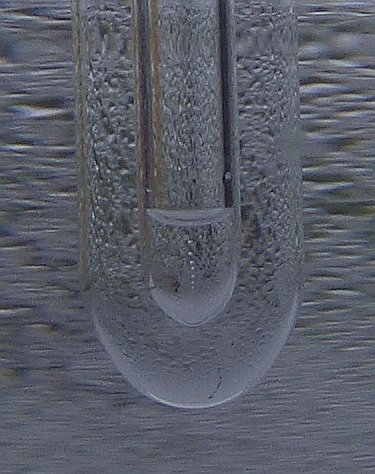Xenon - Xe
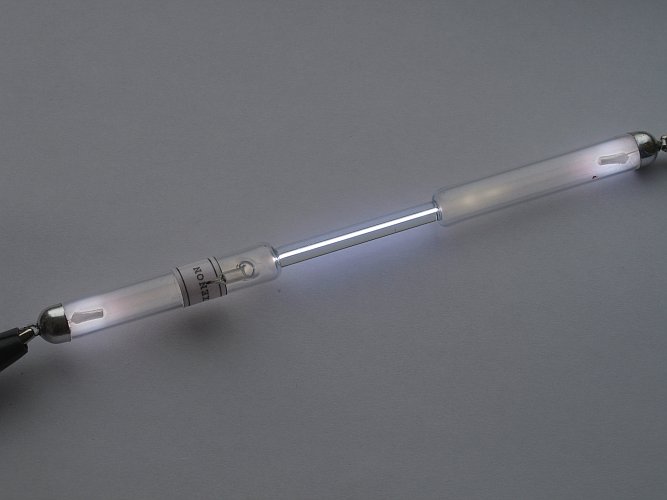
The gas xenon is a colorless gas, which is not interesting at all to display. One could equally well display a bottle full of air. As with helium and neon, xenon also can be used in a gas discharge tube, but the visible light output for a given power input is lower than for helium and especially neon. The picture above shows a tube, filled with xenon at low pressure, of approximately 20 cm length, which is connected to a 3300 V AC source, in series with a 400 kΩ resistor in order to limit the current. This already shows the nice white color of the emitted light.
When the same tube is connected to a 5 MΩ resistor, as the helium and neon tubes, then the light output is much lower, while for the helium and neon tubes the light output is very bright. This low output is shown in the picture below. The emitted light looks grey.
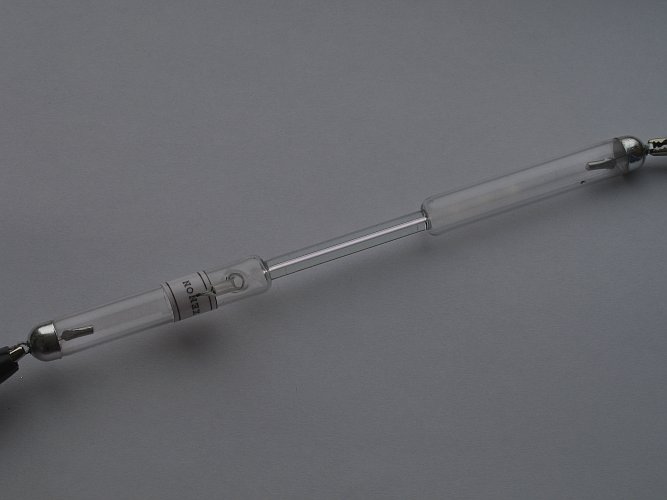
Still, the gas xenon is used very much, especially in flash devices. Although the visible light output for sustained emission of light is much lower than for helium and neon tubes at the same power input, in flash devices, the light output is very high. Below follows a picture of a small flash tube discharge. The light is very bright white, with a blue tinge.
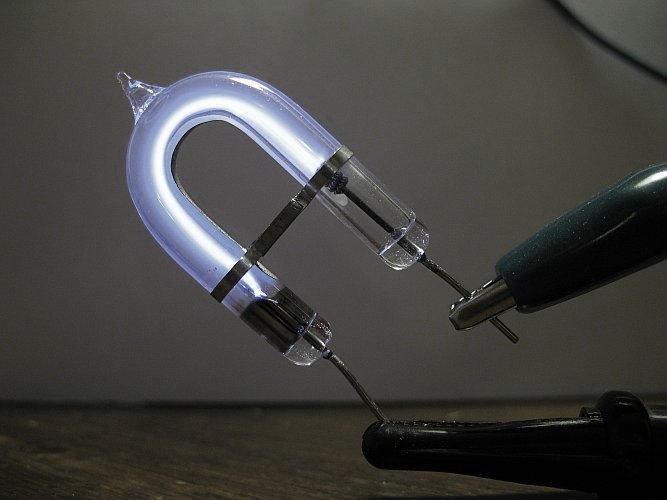
The gas xenon can be liquified with some difficulty, but only below 16 şC, which is the critical temperature of xenon. Below, a nice sample is shown, of high-pressure xenon, in a quartz ampoule, which in turn is immersed in a transparent resin cylinder. The gas inside the ampoule is invisible at room temperature, as is shown by the picture below.
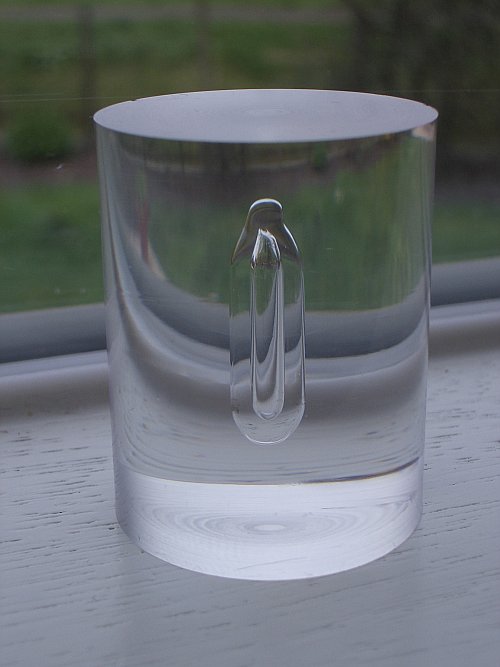
The picture below shows a close-up of the quartz ampoule with the xenon gas inside.
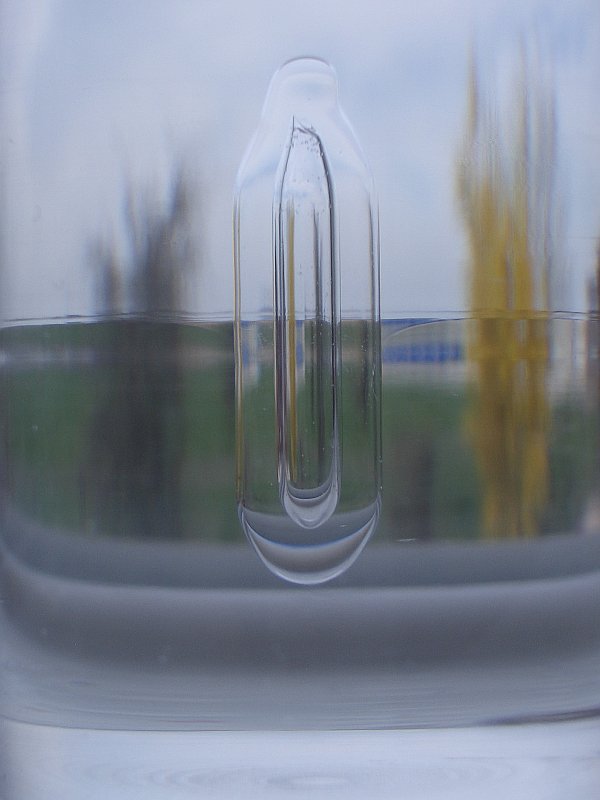
When the cylinder is put in the fridge for several hours, then the gas liquefies and a clear surface can be observed in the ice-cold ampoule. Due to the cold, the cylinder becomes covered by water droplets, which condense on it. The front of the cylinder was rubbed such that it heated up and dried, while the rest of the cylinder was allowed to become wet. This allows the liquid xenon to be photographed more easily:
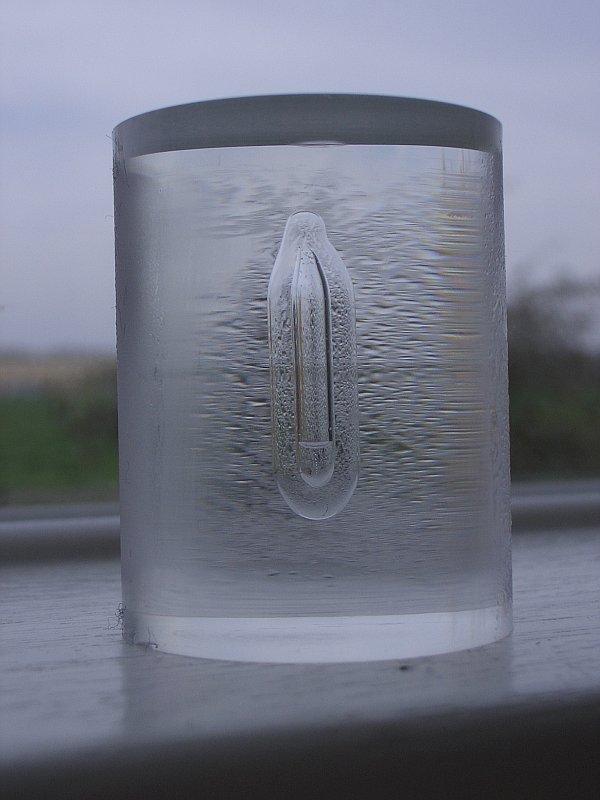
A close-up of the liquid xenon is given in the picture below:
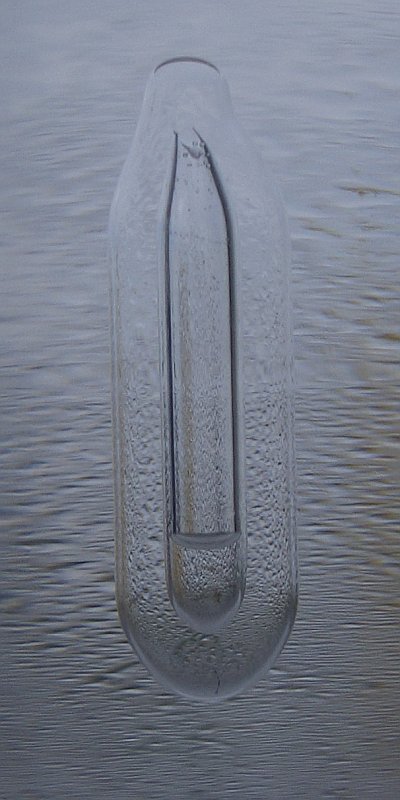
After some time, when the temperature rises a little inside the resin cylinder and the quartz ampoule, then you can actually see the xenon boil. This boiling only lasts for a short time. At a certain point, the surface of the xenon almost becomes invisible and after that, it has become completely gaseous again.
